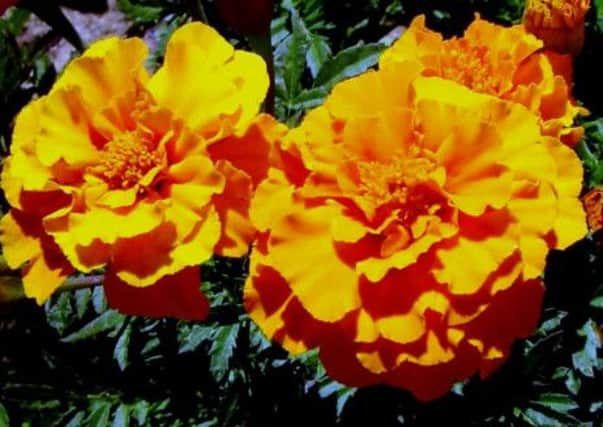Is winter over at last?


Some gardeners have already done the deed and planted out tender bedding plants but it’s a gamble, and the more prudent will wait until the beginning of June, knowing that the weather should then be set fair for a few months.
But bedding plant success comes, ultimately, from preparation. Water the plants in their trays or pots before planting – thoroughly wet the root balls and then leave them to drain.
Advertisement
Hide AdAdvertisement
Hide AdIf you’re worried about a drought, or your soil is on the dry side, improve the water-holding capacity of the soil. That means providing organic matter at root level which is capable of holding more moisture.
You may have your own well-rotted garden compost to use or you may have to buy a bag of something like Miracle-Gro All Purpose Enriched Compost.
Whatever you use, dig a handful or two into the bottom of the planting hole and then water. Always plant at the right depth. Carefully remove the root ball from your tray or individual pot and place it at the correct depth in the planting hole. Use more compost to improve the soil around the root ball and then build a circular wall of soil to hold water immediately over the root area without any running away.
Water and feed moderately. Water the new plant into the soil with a soluble plant food, wetting the soil and the leaves of the plant. Foliar feeding will help the plant recover more quickly from transplanting shock and encourage roots to grow deeper.
Advertisement
Hide AdAdvertisement
Hide AdA layer of organic matter will reduce evaporation. A decent mulch also helps control weeds. These tips for planting out bedding plants apply equally to planting any container-grown plant into soil – vegetables, shrubs and flowering perennials such as gaillardia, delphiniums, foxgloves, achillea and the like.
With deep-rooted plants like this it’s also a good idea to sink a plastic pot beside the root area and fill this with gravel. Any subsequent watering for the plant can then be applied through the pot, ensuring that the liquid gets to where it’s needed most – the roots.